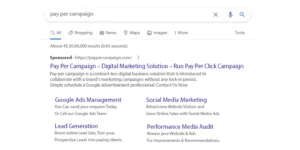Introduction
In today’s digital landscape, consumers interact with brands across multiple platforms, making it essential for businesses to adopt a cross-channel content strategy. Cross-channel content involves creating and distributing consistent, cohesive, and complementary messages across various channels to engage and convert audiences. This blog explores the importance of cross-channel content, strategies for implementation, and best practices to ensure your brand’s message resonates across all touchpoints.
The Importance of Cross-Channel Content
1. Enhanced Customer Experience: Consumers expect seamless and consistent experiences regardless of the platform they use. Cross-channel content ensures that your messaging, tone, and branding remain uniform across all channels, providing a smooth and enjoyable customer journey.
- Consistency: A consistent brand message builds trust and recognition, making it easier for customers to connect with your brand.
- Convenience: Providing relevant content across different platforms meets customers where they are, enhancing their overall experience.
2. Increased Engagement and Reach: You can reach a broader audience and increase engagement by leveraging multiple channels. Different platforms attract different demographics, and a cross-channel approach ensures that your content reaches various segments of your target market.
- Broader Audience: Utilizing multiple channels allows you to engage with different user groups, expanding your reach.
- Higher Engagement: Tailoring content to fit each platform increases the likelihood of interaction, as users prefer content that feels native to their chosen platform.
3. Improved Data Collection and Insights: Cross-channel content provides valuable data and insights into customer behavior and preferences. By analysing interactions across different channels, you can comprehensively understand your audience and optimize your marketing strategies.
- Holistic View: Collecting data from multiple channels offers a more complete picture of customer behavior and preferences.
- Better Optimization: Insights gained from cross-channel data enable you to fine-tune your content strategy for maximum impact.
Strategies for Implementing Cross-Channel Content
1. Understand Your Audience: Before creating content, it’s crucial to understand your audience’s preferences, behaviors, and the channels they use. Conduct thorough market research and analyse data to identify the most effective platforms for your target market.
- Audience Segmentation: Divide your audience into segments based on demographics, interests, and behaviors to tailor content more effectively.
- Channel Preferences: Determine your audience’s preferred platforms and prioritize those channels in your strategy.
2. Develop a Unified Content Strategy: Create a unified content strategy that aligns with your brand’s goals and messaging. Ensure that all content pieces, regardless of the channel, contribute to a cohesive narrative and support your objectives.
- Content Calendar: Develop a calendar to plan and organize your cross-channel content, ensuring timely and consistent delivery.
- Core Messaging: Establish core messaging guidelines to maintain consistency across all channels.
3. Tailor Content for Each Channel: While maintaining a consistent brand message, tailor your content to fit each channel’s unique features and audience expectations. Different platforms have different strengths; your content should leverage these to maximize engagement.
- Platform-Specific Content: Create content that suits the format and style of each platform (e.g., short videos for TikTok and in-depth articles for LinkedIn).
- Adaptive Design: Ensure your content is optimized for different devices and screen sizes.
4. Leverage Cross-Promotion: Promote your content across different channels to drive traffic and increase visibility. Cross-promotion helps to reinforce your message and encourages users to engage with your brand on multiple platforms.
- Integrated Campaigns: Develop integrated marketing campaigns that span multiple channels, creating a unified brand experience.
- Linking and Sharing: Include links to other platforms and encourage users to share your content across their preferred channels.
5. Monitor and Measure Performance: Regularly monitor the performance of your cross-channel content to identify what’s working and what needs improvement. Use analytics tools to track key metrics and gain insights into audience engagement and behavior.
- Performance Metrics: Track metrics such as reach, engagement, conversion rates, and ROI for each channel.
- A/B Testing: Conduct A/B testing to compare content variations and identify the most effective strategies.
Best Practices for Cross-Channel Content
1. Maintain Consistency: Consistency is key to a successful cross-channel content strategy. Ensure your brand’s voice, tone, and visual identity are uniform across all platforms to build trust and recognition.
- Brand Guidelines: Develop comprehensive brand guidelines to maintain consistency in messaging, design, and tone.
- Unified Messaging: Ensure all content aligns with your brand’s core values and messaging.
2. Personalize Content: Personalization enhances the relevance of your content and increases engagement. Use data and insights to tailor content to individual preferences and behaviors.
- Dynamic Content: Implement dynamic content that changes based on user behavior and preferences.
- Segmentation: Use audience segmentation to deliver personalized content to different user groups.
3. Engage with Your Audience: Actively engage with your audience across all channels to build relationships and foster loyalty. Respond promptly to comments, messages, and feedback to show that you value their input.
- Two-Way Communication: Encourage dialogue by asking questions, conducting polls, and inviting feedback.
- Customer Support: Provide excellent customer support across all platforms to enhance the customer experience.
4. Stay Updated with Trends: Stay abreast of the latest trends and developments in digital marketing and social media to keep your content fresh and relevant. Adapt your strategy to leverage new features and opportunities as they arise.
- Trend Analysis: Regularly analyze industry trends and competitor strategies to identify new opportunities.
- Continuous Learning: Invest in ongoing learning and development to update your team on the latest best practices.
Conclusion
Cross-channel content is essential for modern marketers looking to engage a diverse audience and maximize their impact. By understanding your audience, developing a unified content strategy, tailoring content for each channel, and leveraging cross-promotion, you can create a cohesive and compelling brand experience. Monitoring performance and adhering to best practices will ensure your cross-channel content strategy remains effective and resonates with your audience in today’s dynamic digital landscape.





